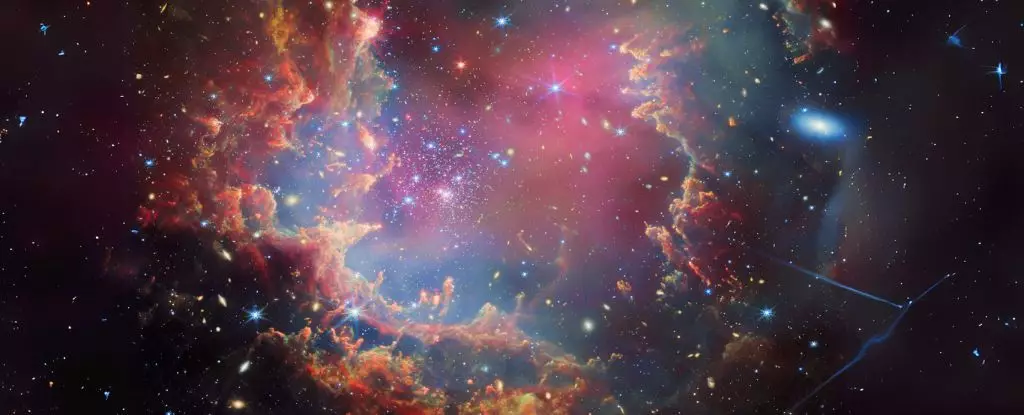Astounding new research unveils the possibility that water, the quintessential ingredient for life, could have originated far earlier in the universe’s timeline than previously believed. A study led by cosmologist Daniel Whalen from Portsmouth University in the UK suggests that as soon as 200 million years post-Big Bang, conditions may have been ripe for the formation of this essential molecule. Traditionally, it was assumed that the universe lacked the heavier elements, particularly oxygen, which are crucial for water’s creation. However, simulations now reveal a more complex narrative where water could have been far more abundant than we ever imagined in primordial galaxies.
The foundational theory in cosmology has long held that the elemental ingredients necessary for water’s formation were sparse in the universe’s infancy. Yet these latest simulations indicate that even in a universe dominated by hydrogen and helium, the earliest stars could still have given rise to oxygen—a pivotal element in the formation of water. The implications here are colossal: it suggests a universe not only capable of producing water, but potentially teeming with the very building blocks necessary for life as we know it.
In their groundbreaking simulations, Whalen and his collaborators virtually reconstructed supernova explosions from these primordial stars, some up to 200 times the mass of our Sun. Their detailed experiments revealed that within moments of exploding, these stellar giants reached temperatures and pressures high enough to convert lighter elements into oxygen. The aftermath of such cataclysmic events would have released a flood of energetic gases, dispersing over vast distances across the universe.
What is most striking is the rapid cooling of these supernova remnants. As the gases cooled, they formed molecular hydrogen (H2), a crucial ingredient that, when mingled with oxygen, led to the formation of water droplets throughout the cosmos. The researchers propose that dense regions of these stellar explosions—subsequently referred to as halos—might have been ideal sites for water accumulation.
The proposition that primordial galaxies contained significant amounts of water opens up entirely new avenues for our understanding of life in the universe. Contemporary paradigms suggest that it is only in atmospheres surrounding rocky planets that life can flourish. However, if these early galaxies housed water in substantial quantities, life could have potentially emerged far earlier than the timeline we currently imagine.
Moreover, these primordial halos, enriched with metals from the supernovae, could serve as fertile grounds for the formation of new stars and even planets. As suggested by the researchers, higher concentrations of metallic elements in these halos could foster the creation of rocky worlds equipped with the essential ingredients for life, pushing the question of extraterrestrial existence into far older epochs than traditionally envisioned.
A fascinating aspect of Whalen et al.’s research is the balance between water formation and destruction. Areas of the primordial galaxy where halo gas was scarce risked obliterating newly formed water during explosive events. In contrast, denser regions could offer a protective environment, shielding water molecules from destructive radiation—paving the way for their durability and potential contributions to future planetary systems.
This delicate balance raises important questions about the universe’s early ecological dynamics. It is essential to consider how these supernova explosions and the subsequent density variations impacted the long-term survivability of water in those early cosmic environments. If protective mechanisms existed, as suggested, could they have been sufficient to preserve water for billions of years, allowing life to arise at unimaginable timescales?
The speculation surrounding the abundance of water in our universe continues to grow. With estimates pointing to a production rate that could have yielded levels merely ten times lower than what we see today, it paints a picture of a universe rich with possibilities. The romantic notion of an early cosmos teeming with the elixir of life invites us to rethink what we define as habitable and challenges the temporal constraints we impose on the emergence of life.



Leave a Reply